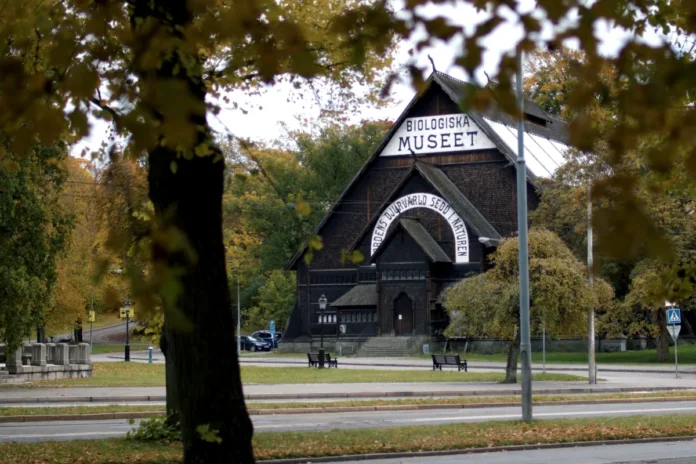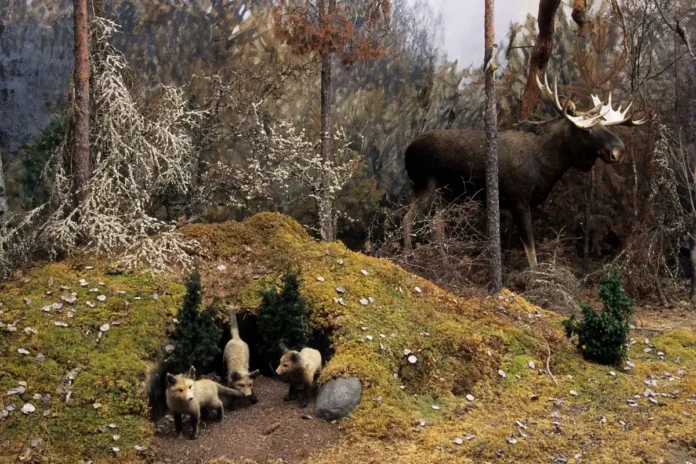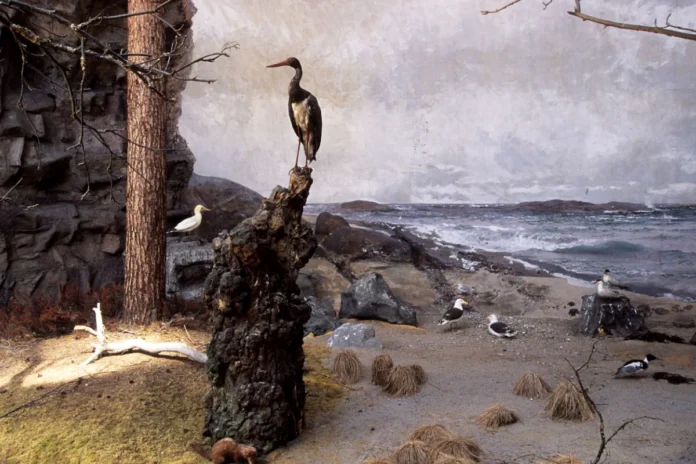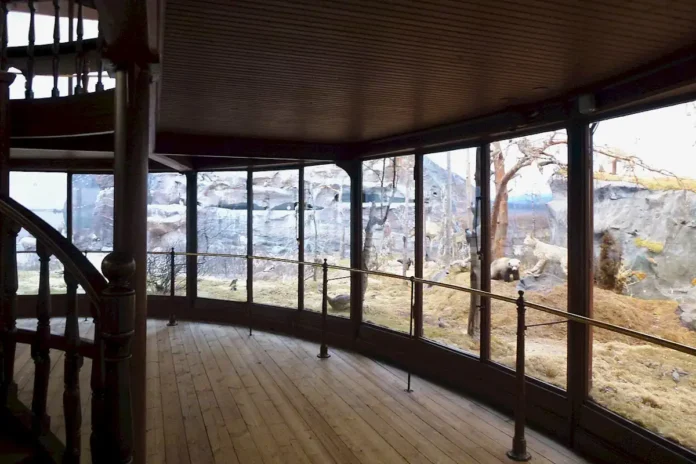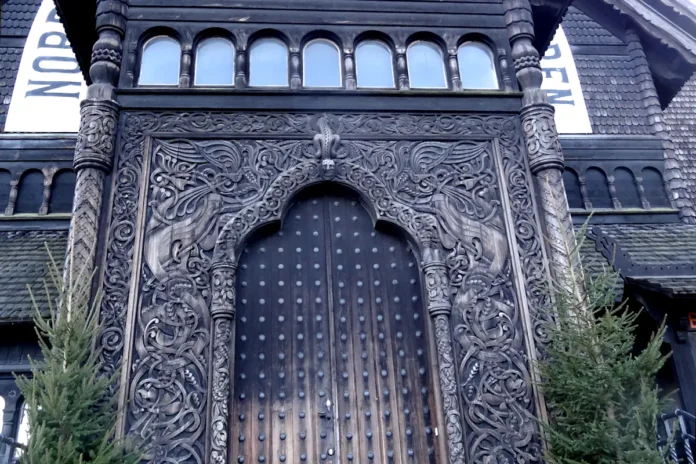Biologiska Museet (Biological Museum) in Stockholm’s Djurgården showcases Scandinavian wildlife in naturalistic dioramas, featuring artistic works by Bruno Liljefors. The museum, built in 1893, is currently closed for renovations, but its unique exhibits remain a cherished memory for past visitors.
In 2017, the Biological Museum had to close for renovations. Thankfully, a comprehensive restoration has now begun, and the museum should reopen in a few years!
Biologiska Museet: Architectural splendor
The Biologiska Museet was a major attraction at the Stockholm Exhibition in 1897, and its building, a striking example of national romantic architecture, was inaugurated in 1893. Designed by architect Agi Lindegren, the structure features tarred wooden shingles adorning its exterior and facades, adding to its rustic charm. Furthermore, the intricately carved reliefs on the portal are reminiscent of the Borgund Stave Church, drawing inspiration from the medieval stave churches of Norway and showcasing a blend of artistry and craftsmanship.
“Unique in its kind—Panorama of Animal Life—Unparalleled in the world” was the original inscription on the facade. There is no electric lighting in the exhibition hall. Instead, there is a sense of natural light as daylight pours through the large skylights.
Today, the facade bears the inscription: ‘Nordic animal world, seen in nature.’
The Biologiska Museet diorama
Among the museum’s displays are dioramas, which present realistic representations of diverse ecosystems and their inhabitants. In essence, dioramas are intricate, three-dimensional displays that attempt to replicate natural environments and offer a realistic look into the lives of various species.
Craftsmanship in dioramas
In these dioramas, artists skillfully arrange taxidermy animals in meticulously designed environments to mimic their native habitats and behaviors. Visitors get a unique and captivating experience when they see animals in settings that closely resemble their natural habitats.
Educational value of dioramas
The Biologiska Museet’s use of dioramas improves the museum’s educational component by enabling visitors to examine and enjoy the variety of wildlife in settings that closely mimic their natural habitats. It is a widely used and successful technique for communicating knowledge about animal behavior, ecosystems, and the relationships between species in their various habitats.
Extensive exhibits collection
Upon entering, the museum greets visitors with an abundance of displays covering zoology, botany, and paleontology. The museum also has a large collection of animals in taxidermy on display. This encompasses marine life, birds, and mammals. As a result, visitors can get a close-up look at animals from different environments. Furthermore, it is visually stunning and instructive due to the fine details and brilliant colors.
Conclusion
The enduring interest in nature is illustrated by the Biologiska Museet in Stockholm. Whether you are interested in the educational opportunities, the diverse exhibits, or the captivating architecture and diorama, the museum offers an amazing and enlightening experience.


